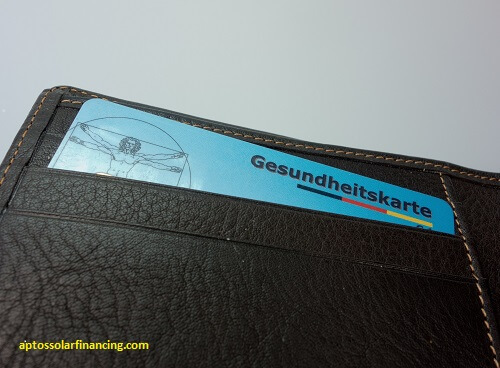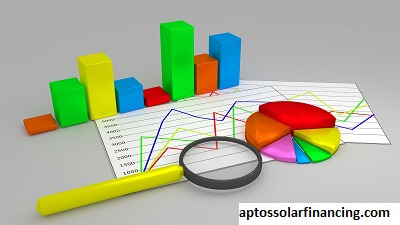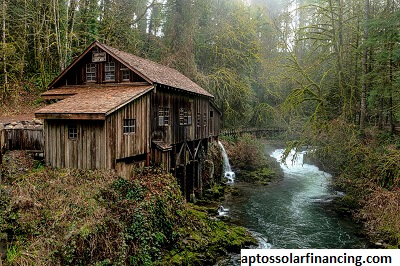Equipment Financing: An Overview of Its Operation:
Equipment Finance Insurance: An Overview of Its Operations:
Many organizations consider equipment to be an expensive financial expenditure. As a result, both small and large firms typically benefit from equipment financing rather than investing large sums of money to purchase critical equipment. Using the Finance technique, people can save money, purchase the equipment they require, and plan payments based on the usable lives of the assets.
Equipment financing refers to the process of securing a loan or lease for business equipment. Except for real estate, firms can use equipment financing to purchase almost anything. Companies can use equipment financing to pay for build-out costs, office furniture and fixtures, medical equipment, production equipment, company cars, technology, and a variety of other items required to run their enterprises.
Equipment Finance Insurance: An Overview of Its Operation
“It frequently takes years for businesses to fully reap the benefits of that initial investment when they buy new equipment,” stated Mark Bearden, senior vice president of First American Equipment Finance, a division of City National Bank. “With equipment financing, business leaders can spread the costs over some time and better align the cost with the benefit of the equipment.”

Comparing Equipment Leasing and Loans:
Equipment loans and leases are common ways that equipment finance is provided. Despite their apparent similarities, the two types of funding differ significantly in a few key areas.
For example, although certain lenders may provide equipment loans up to 100% of the equipment’s worth, it is more typical for them to provide loans up to a certain sum.
For instance, a lender might lend money equal to 80% of the equipment’s price. This implies that a 20% down payment of the equipment’s cost must be made by the borrower.
Equipment Finance Insurance: An Overview of Its Operation
If you decide to go with an equipment loan, you’ll need to confirm that you have the funds available for both the monthly loan installments and any necessary down payment. You will become the complete owner of the equipment after you have paid off your loan.
Equipment leasing is different from equipment loan in that there is no cash down payment required because you are not purchasing the equipment. Although they never actually own the equipment, leasing clients frequently have cheaper monthly payments than loan consumers.
Among the benefits of renting equipment are:
Equipment Finance Insurance: An Overview of Its Operation
less than the equipment’s cash purchase price.
Allowing for reliable budgeting.
Preventing equipment obsolescence.
Because the lessor takes a “residual position” in the leased equipment, leasing may be less expensive than taking out a loan to purchase it. Vehicles and computers are two examples of equipment that age rapidly. Thus, leasing allows you to regularly upgrade to new technologies without spending a lot of money. If you intend to update your equipment frequently, ensure that your lease duration allows you to do so without incurring a penalty. Try to synchronize the lease period with your planned renovations.
Certain leasing agreements include a buyout option for organizations who choose to purchase the leased equipment after the lease term expires. If you want to lease equipment but eventually own it outright, make sure your lease agreement includes a “fixed purchase” option.

Options for contract termination at the end of a lease may include:
Equipment Finance Insurance: An Overview of Its Operation
Purchasing the apparatus.
extending the lease.
Returning the equipment and terminating the lease.
It’s critical to understand your options when your lease expires. Notice of your election is typically required under lease agreements several months before the lease expiration date. Other lease agreements can restrict the lessee’s options over whether to buy, keep, or return the equipment, or they might include return fees.
What Qualifies as Equipment Financing Requirements?
The majority of lenders will have conditions before they will finance business equipment. First, the equipment you intend to finance will be valued by the lender. Many lenders will consider the sale price as the value for financing reasons if the equipment is new.
A lender can demand an appraisal of any secondhand equipment your company intends to buy. It could be necessary for you to give them pictures and serial numbers so they can value the equipment.
Debt Service Protection:
Apart from equipment valuation, the lender may also demand “debt service coverage.” This entails going over your company’s financial statements to ensure that you have enough cash flow to cover the equipment loan payments each month.
The equipment’s ability to increase your company’s revenue will also be evaluated by the lender, who will compare that amount to the monthly loan payments.
Equipment Finance Insurance: An Overview of Its Operation
Let’s take an example where you run a logistics and transportation company and wish to finance a new fleet of trucks that will enable you to deliver more items and cover more ground each month, resulting in a $25,000 monthly income increase. Make sure your monthly loan payments will be far less than your monthly income if that’s what a lender could want to ensure. This makes it more likely that the new equipment will provide your company with the chance to grow its revenue.
Credit Record:
Lastly, to assess whether the loan is worth the risk they are taking, lenders will look over the credit history of your company. The lender may need to see the owner’s personal credit report and score to confirm creditworthiness if your company has little or no credit history.
What Conditions Apply to Financing for Equipment?
The terms for equipment financing will vary depending on the equipment loan provider. Loan durations for business equipment might vary from a few months to a few years.
Typically, lease agreements are three, seven, or ten years long. All leases, however, are unique, with terms changing according to the kind of equipment being leased and the borrower’s or lessee’s credit standing.
Rates for Financing Equipment:
According to Bearden, equipment financing rates usually follow the going rates in the market, however, there have been recent sharp spikes in interest rates. “Our clients greatly value our unique, consulting approach in this rate climate. It enables us to identify financing options that satisfy the needs of certain customers,” he remarked.
Lenders
Equipment Finance Insurance: An Overview of Its Operation
may, for instance, offer specialized repayment options, including a limited interest-only term or semi-annual or quarterly payments in place of monthly ones. Finding the best solution may also involve considering unusual end-of-term choices, tax leasing products or leases, and loans with extended amortizations.
Equipment financing is commonly used, regardless of the state of interest rates, according to Bearden, because specialists in the field can put together solutions that meet each client’s unique financial goals.
Which Business Equipment Can I Finance?
Almost any kind of company equipment, such as office furniture, medical equipment, farm machinery, commercial ovens, computer hardware, software, tools, and machines, can be financed via equipment financing. However, you cannot use equipment finance to buy a building, land, or any other kind of real estate for your company.

Advantages of Equipment Financing:
For a certain amount of time and at a fixed rate, businesses can obtain the equipment they require using equipment financing, which provides several advantages. Financing for equipment is a popular option among business owners for:
Control your cash flow:
Instead of needing to make a sizable upfront payment to purchase the equipment they require, equipment financing enables firms to maintain cash on hand and make monthly payments for that equipment. Additionally, it enables companies to budget for a consistent, monthly expense.
Purchase Equipment As Soon As possible:
Rapid execution and completion are common with equipment loans and leases, providing your company with the necessary equipment promptly.
“Every client is assigned a project manager who works like a concierge,” for instance, according to Bearden of First American Equipment Finance. “Our project management team can streamline the acquisition process, as well as develop creative solutions to meet the client’s needs.”
Managing the Equipment Lifecycle Easily:
Business owners can avoid ever having to make a sizable cash purchase by carefully planning for equipment financing and updating their equipment regularly when it becomes obsolete.
Advantages of a Customised Approach:
The top experts in equipment finance don’t merely supply universally applicable solutions. “Our financing specialists discuss with clients their goals for the asset and can customize a specific product that works for them,” Bearden stated.










